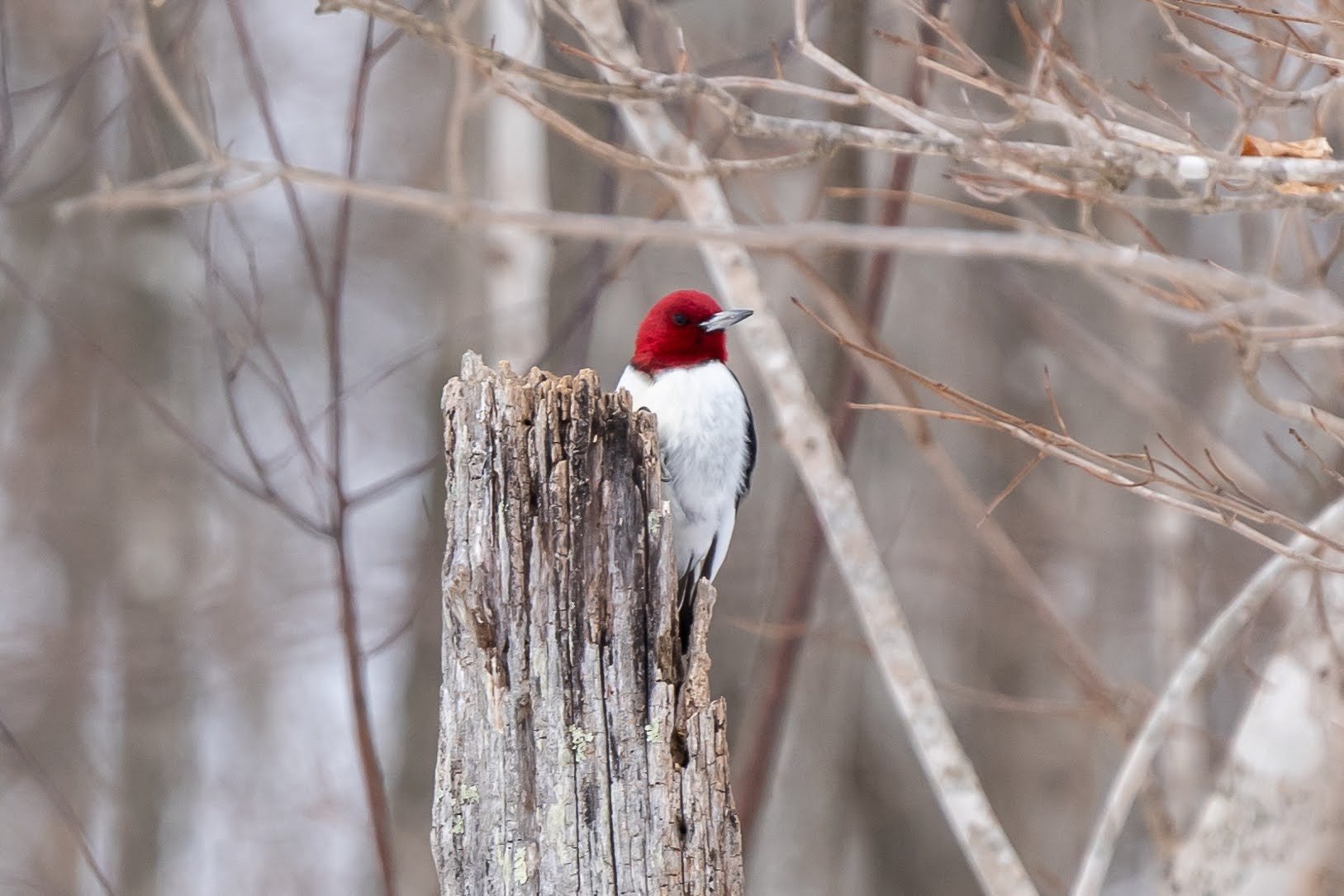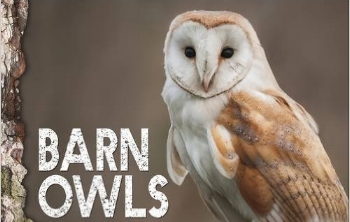

Birding at Burkes Garden
Last weekend, the Blue Ridge Birders and friends traveled to beautiful Burkes Garden looking for raptors and other winter resident birds.

BRDC News: Upcoming Events
The world is thawing out, fauna is getting more active, and here at BRDC we are excited to get back out there and discover more with you! Read for info on our Winter Naturalist Rally, Woodcock Display Walk, Family Weekend, and Spring Break Camp.

Help Scientists by Collecting Data with the Great Backyard Bird Count
For four days each February, birdwatchers of every skill level can participate in a global event for the love and wellbeing of birds.


Searching for Ducks
BRDC staff ventured into the field on Monday, February 15th in search of wintering/migrating ducks and waterfowl. We had a very successful day, with a total of 15 waterfowl species identified and 531 individuals counted.

Kettles over Mahogany Rock
BRDC staff and volunteers spent Saturday through Monday looking up!

September & October 2020 Events Calendar
Between capturing the remaining vestiges of summer and welcoming fall, there is a lot to appreciate about September! Can you join us for one of the following events?

7th Graders Discover Hawk Migration
Jim Keighton of Blue Ridge Birders hosted BRDC and 19 Grayson Highlands seventh graders for a day of counting migrating hawks.

An August Nature Ramble
We have enjoyed exploring the mountains around Boone for its considerable natural wonders. In August the birds have mostly finished breeding and reduced their vocalizations, so we enjoy watching insects and anything else in the natural world that draws our attention.
I was surprised to find that in August the most common large butterfly near Boone is the pipevine swallowtail.

BRDC Partners with Blue Ridge Birders
Blue Ridge Discovery Center and the Blue Ridge Birders are excited to announce a partnership to make the Blue Ridge Bird Club a program of BRDC! This partnership brings a renewed focus on avian life to BRDC and ensures that the many activities of the Bird Club will continue into the future. Beyond programming, Blue Ridge Birders provided nearly $5,000 from the James Coman Fund to support regional youth education focused on birds.

2016 Christmas Bird Count
Prior to the turn of the 20th century, hunters engaged in a holiday tradition known as the Christmas "Side Hunt". They would choose sides and go afield with their guns—whoever brought in the biggest pile of feathered (and furred) quarry won. Conservation was in its beginning stages in that era, and many observers and scientists were becoming concerned about declining bird populations.
Beginning on Christmas Day 1900, ornithologist Frank M. Chapman, an early officer in the then-nascent Audubon Society, proposed a new holiday tradition—a "Christmas Bird Census" that would count birds during the holidays rather than hunt them.

Turkeys Have a Reason to be Thankful Today
You wouldn’t think that turkeys have much reason to be thankful given their place as the centerpiece of Thankgiving dinner, but since their decline to near extinction in the 1930's, turkeys in the Blue Ridge are a wildlife management success story.

The Power of Owl Pellets
During the first week of November, Grayson County 4-H and BRDC teamed up to bring all of the 4th graders across Grayson County our famous owl pellet program.
It always begins with ew, yuck and gross, because the idea of dissecting something that was once inside a living bird, summons visions of poop or puke. We explain that an owl pellet is similar to a fur ball your house cat occasionally coughs up.

1st Graders Learn the Ways of Barn Owls
First grade students at Independence, Fries and and Grayson Highlands School learned about barn owls in this month’s K-2 Reading Program.
Volunteer Sarah Osborne read the book Barn Owls, and used talons and feathers from the BRDC collection to engage students in the study of these nocturnal raptors.

Explorers Club travels to Grandfather Mountain Hawk Watch
Aiming for peak broad-winged hawk migration, the explorers club hit the road to visit Grandfather Mountain Hawk Watch. We arrived not a minute too early! As we were setting up shop on Linville Peak (across the swinging bridge), kettles began to form to the southeast. It was if the hawks were appearing out of thin air, rising from the forest canopy below. We had incredible views looking nearly directly down on the birds. They were taking advantage of the thermals forming on the southeast facing slope of the mountain and soaring right in front of us. They circled up and up in kettles of thirty or more birds until they reached cruising altitude and one by one they would peel off continue their journey south toward Central and South America.

The creation of an Ornithology Camp in honor of William Roberts
Blue Ridge Discovery Center, in gratitude and honor of our recently departed and most principled birder and outdoor enthusiast, would like to advance his contagious interest in birds, flight, majesty of raptors, seasonal surprises of migration, and his boundless curiosity.
We believe that the best way to share his love of birds is to create an Ornithology Camp supported by a scholarship fund in his name.

The Raven Soars On
Yesterday we lost one of the shining beacons and solid rocks of Blue Ridge Discovery Center. Board member William Roberts succumbed to a long battle with cancer, but only after one amazing journey.

Signs of Spring
Spring is a wonderful time of year, with leaves and blooms emerging, birds singing, and amphibian reproduction in full swing. But breeding occurs over a prolonged period since different species have distinct tolerances and adaptations for seasonal progression in temperature and related habitat changes.

Canadian migrant arrives early on the New River
With the arrival of August it seems that summer is almost over, most birds have finished breeding, and cooler weather must be coming soon. But one of the surest signs of the approaching end of summer is the first arrival of migrating birds that breed in the far north.
